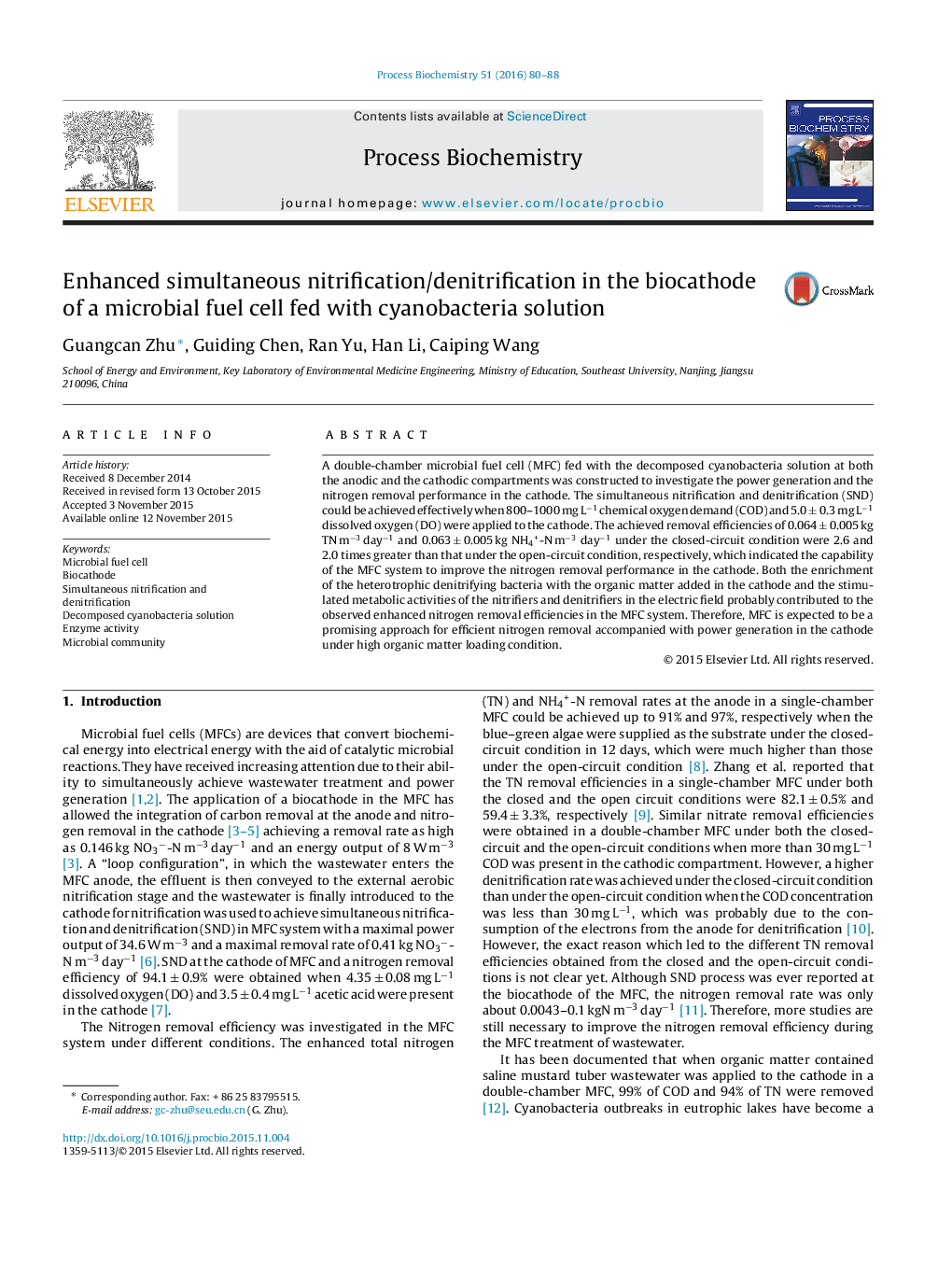| Article ID | Journal | Published Year | Pages | File Type |
|---|---|---|---|---|
| 34240 | Process Biochemistry | 2016 | 9 Pages |
A double-chamber microbial fuel cell (MFC) fed with the decomposed cyanobacteria solution at both the anodic and the cathodic compartments was constructed to investigate the power generation and the nitrogen removal performance in the cathode. The simultaneous nitrification and denitrification (SND) could be achieved effectively when 800–1000 mg L−1 chemical oxygen demand (COD) and 5.0 ± 0.3 mg L−1 dissolved oxygen (DO) were applied to the cathode. The achieved removal efficiencies of 0.064 ± 0.005 kg TN m−3 day−1 and 0.063 ± 0.005 kg NH4+-N m−3 day−1 under the closed-circuit condition were 2.6 and 2.0 times greater than that under the open-circuit condition, respectively, which indicated the capability of the MFC system to improve the nitrogen removal performance in the cathode. Both the enrichment of the heterotrophic denitrifying bacteria with the organic matter added in the cathode and the stimulated metabolic activities of the nitrifiers and denitrifiers in the electric field probably contributed to the observed enhanced nitrogen removal efficiencies in the MFC system. Therefore, MFC is expected to be a promising approach for efficient nitrogen removal accompanied with power generation in the cathode under high organic matter loading condition.
Graphical abstractThe variation of TN, COD, NH4+-N, NO3−-N and pH in the cathode under open-circuit and closed circuit conditions were shown in Part A and B, respectively. Under the open-circuit condition, a removal rate of 0.025 ± 0.005 kg TN m−3 day−1 was achieved (Part A), which indicated the occurrence of SND in the cathode. However, the increase of nitrate concentration suggested an uncoupling of nitrification and denitrification when the cathodic pH decreased (Part A). In contrast, in the closed-circuit MFC, 0.064 ± 0.005 kg m−3 day−1 TN removal rate was obtained with no notable accumulation of nitrate or nitrite. In addition, the removal rate of 0.063 ± 0.005 kg NH4+-N m−3 day−1 obtained in the closed-circuit MFC system was higher than in the open-circuit one which only achieved 0.031 ± 0.005 kg NH4+-N m−3 day−1 removal rate. Overall, an enhanced SND process existed in the cathode, which probably attributed to the stability of the pH in the cathode (Part B). Meanwhile, the similar tendency of COD variation was achieved (Part A and B).Highlights•SND was enhanced in cathode fed with degraded cyanobacteria solution high in COD.•Organic matter enriched heterotrophic denitrifying bacteria at the cathode.•The effect of electric field on microbial activity might promote the SND in MFC.Figure optionsDownload full-size imageDownload as PowerPoint slide
